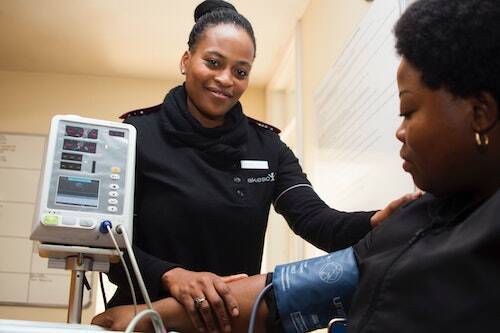
In 2020, the COVID-19 pandemic shined a bright light on the racial inequities that exist in health. As a result, Aledade committed to reducing health disparities; specifically striving to reduce the disparity in hypertension control between Black and white patients.
Nearly 50 percent of American adults, about 116 million people, suffer from hypertension, and only about 1 in 4 have it under control. In addition, it is estimated that about 11 million Americans have undiagnosed hypertension. The downstream impacts of heart disease, stroke, kidney disease, and other complications are many and have a huge impact on the life and health of many Americans. Improving blood pressure is important for everyone, and the urgency is even greater among African Americans. Black Americans see the onset of hypertension at an earlier age and experience worse morbidity and mortality than any other racial group in the United States.
How Can We Eliminate Disparities And Improve BP Control For All?
High blood pressure costs the healthcare system an average of $138-191 billion per year, including cost of care, necessary medication, and loss of productivity from premature death. Primary care has a central role to play in controlling hypertension and reducing both downstream health effects and the associated costs. In fact, controlling blood pressure is the single most effective tool in primary care to save lives.
Aledade has instituted several initiatives to improve hypertension control for all patients, while also targeting Black patients with an aim to reduce the hypertension disparity gap. We launched clinical coaches in practices to support clinical quality improvement on blood pressure workflows. In addition, we distributed hundreds of BP resource kits filled with valuable tools to help our practices improve BP control across the board.
In 2022, we will continue to beat the drum on the importance of hypertension control, explore additional tech-enabled tools to facilitate practice workflows, and support more patient-facing interventions in nutrition and medication optimization.
What Can You Do To Control BP in Your Patients?
Apply the latest hypertension guidelines!
- The 2020 International Society of Hypertension Global Hypertension Practice Guidelines sets definitions for hypertension with in-office, at home, and 24-hour ambulatory blood pressures. It recommends frequent follow-ups and optimization of medication doses and adherence until blood pressure is consistently less than 140/90.
- Ensure your practice has visit workflows in place for rechecking any elevated blood pressures.
- Actively identify and manage patients with elevated blood pressures. Proactively outreach to patients with severely elevated blood pressures (> 160/100) to ensure follow-up within 2-4 weeks. Don’t let them fall through the cracks.
- Initiate and quickly optimize active medication treatment for patients with severely elevated blood pressures, aiming to achieve control within 3 months.
- Track your patients’ progress!

Connect with us!
Start planning your value-based care journey now
Thousands of your primary care peers are choosing Aledade as their value-based care partner. Let our experts show you why.
